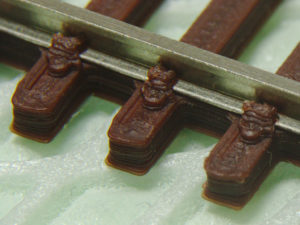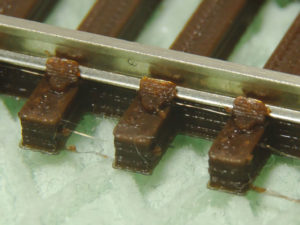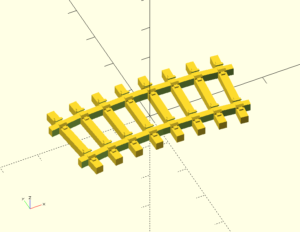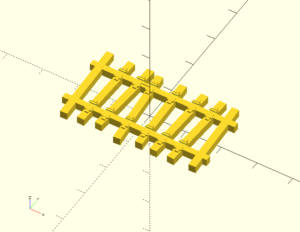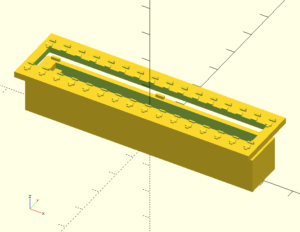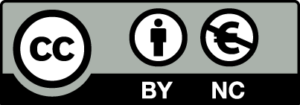We are trying to print tracks from very beginning. Not to replace commercial products (as they are fairly cheap), but we can find specific situation when the possibility to print track is welcome. Surprisingly printing of tracks is not so easy, but we managed it.
Biggest problem are rail chairs – they are very small and they have to be very accurate. Printing from PLA did not bring good results – chairs were smudged and hairy, the sleepers were hairy as well.
Better results we got with ABS printing. Track and chairs are clean, there is problem with rail support – because of specific shape (grid) and material shrinking we were unable to print tracks without cracks. Detail of rail chair printed from ABS can be seen on top image on right side (click on image to zoom in).
ABS printing with small nozzle diameters requires filament overheating – by 20 to 30 degrees. We used following parameters for ABS printing:
- Material: ABS
- Nozzle diameter: 0.25mm
- Layer height: 0.15mm
- Bed temperature: 100°C
- Nozzle temperature: 250°C (gray filament) to 265°C (brown filament)
In the meantime we improved PLA printing – small increase of nozzle temperature and significant increase of acceleration and movement speed drastically reduced stringing. Bottom image on the right show the track printed from PLA – it contains more artifacts but it is more geometrically precise.
- Material: PLA
- Nozzle diameter: 0.2mm
- Layer height: 0.1mm
- Bed temperature: 55°C
- Nozzle temperature: 195°C
Simple tracks
Parametric models of simple straight and curved tracks can be found in attached source file; models are named as track_straight and track_curved.
Straight tracks accepts two basic parameters:
length– track length; actual track is printed slightly shortersleepers– number of sleepers
Curved track accepts following basic parameters:
radius– track radiusangle– anglesleepers– number of sleepers
Both models accept additional parameter edge_chairs which enables or disables rail chairs on both edges – when using standard track joints the rail chairs can interfere with them.
Use cases are documented in source code.
Randomized tracks
We can easily add some salt to the simple straight and curved tracks – we can add some randomization to them. Both models accept additional parameters:
rnd_l– random variation of sleeper lengthrnd_xandrnd_y– random variation of sleeper positionrnd_a– random variation or sleeper rotation angle
The resulting model we can see on the image at right. Final product can be seen in the gallery at the end of article.
Other models
After we mastered printing of simple tracks and namely rail chairs we have uncounted possibilities to create special tracks or constructions with tracks.
One possibility is service pit – we found inspiration at diskuze.modely.biz. Important are images, there is no technical information in text, just discussion how to forbid fraudsters to print models and make business on it.
We used slightly different approach – model is composed from two parts. Top part is wider and is the same thickness as standard tracks. This solution simplifies assembly in terrain and aligning with surrounding tracks. Bottom part can be glued to top part – correct alignment is ensured by keys. Details are visible on exploded model on right side.
Dividing model into two parts was necessary as the overhang of upper part is quite big and it is impossible to print it with satisfying quality.
Model is implemented by models service_pit_top a service_pit_bottom and it is parametric. For top part we can specify total length and number of “sleepers”. For bottom part we can specify total length, depth and number of steps.
length– service pit lengthsleepers– number of sleepersheight– depth of underground partsteps– number of steps
Service pit components and assembled model can be found in gallery.
Gallery
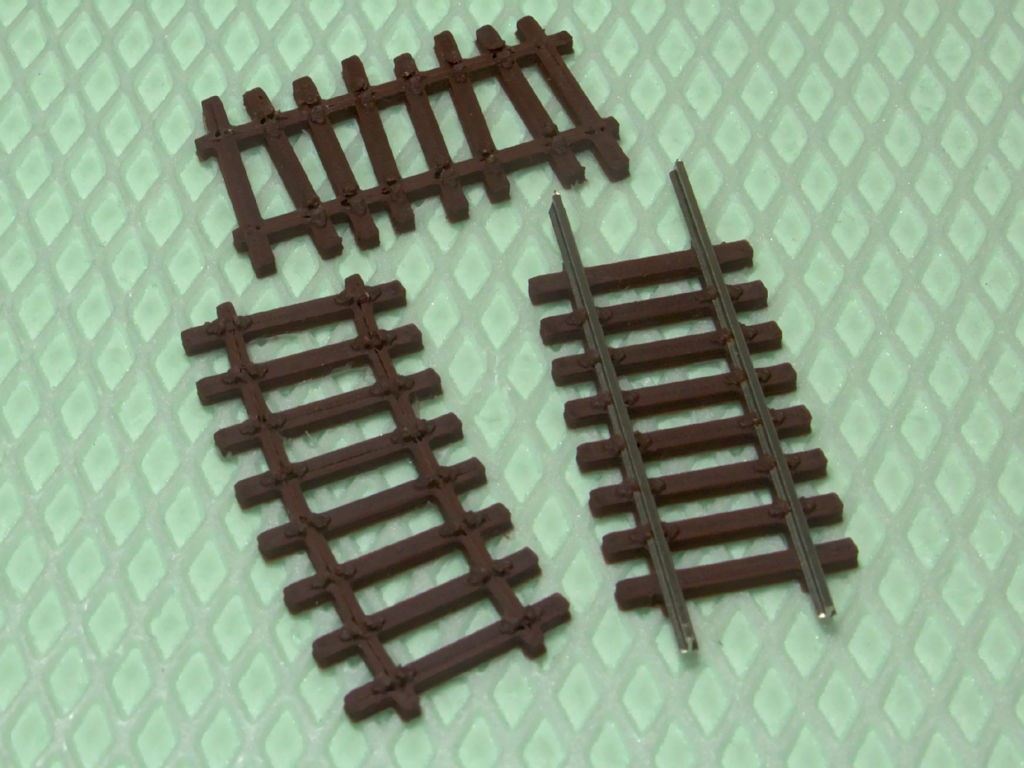
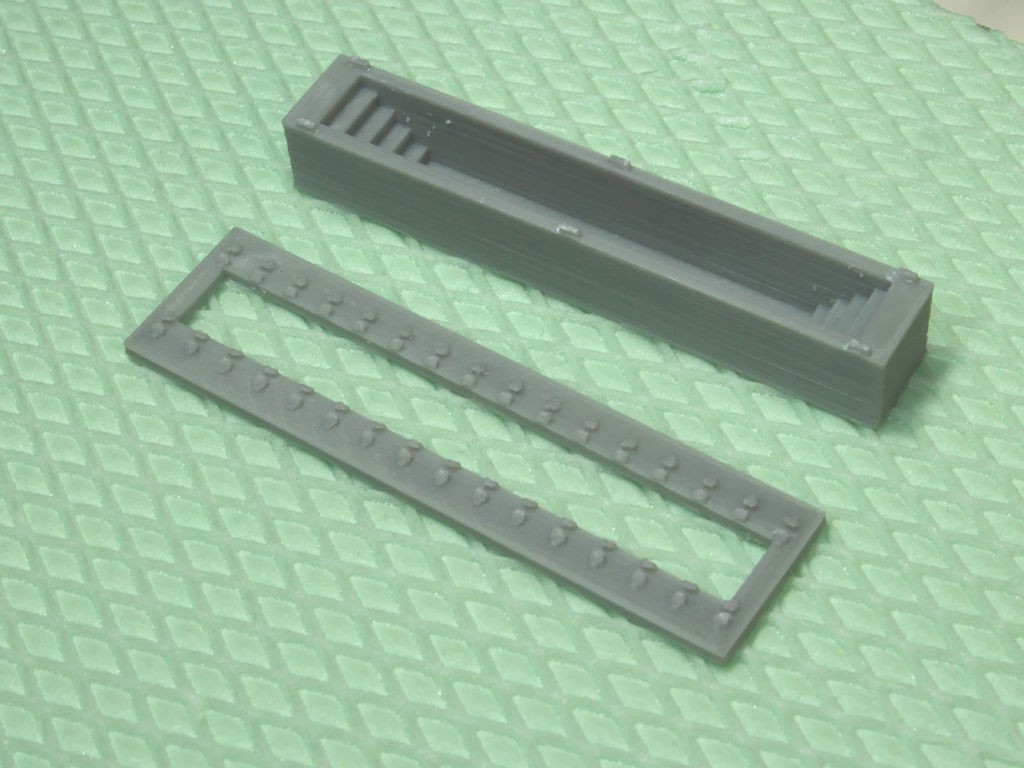
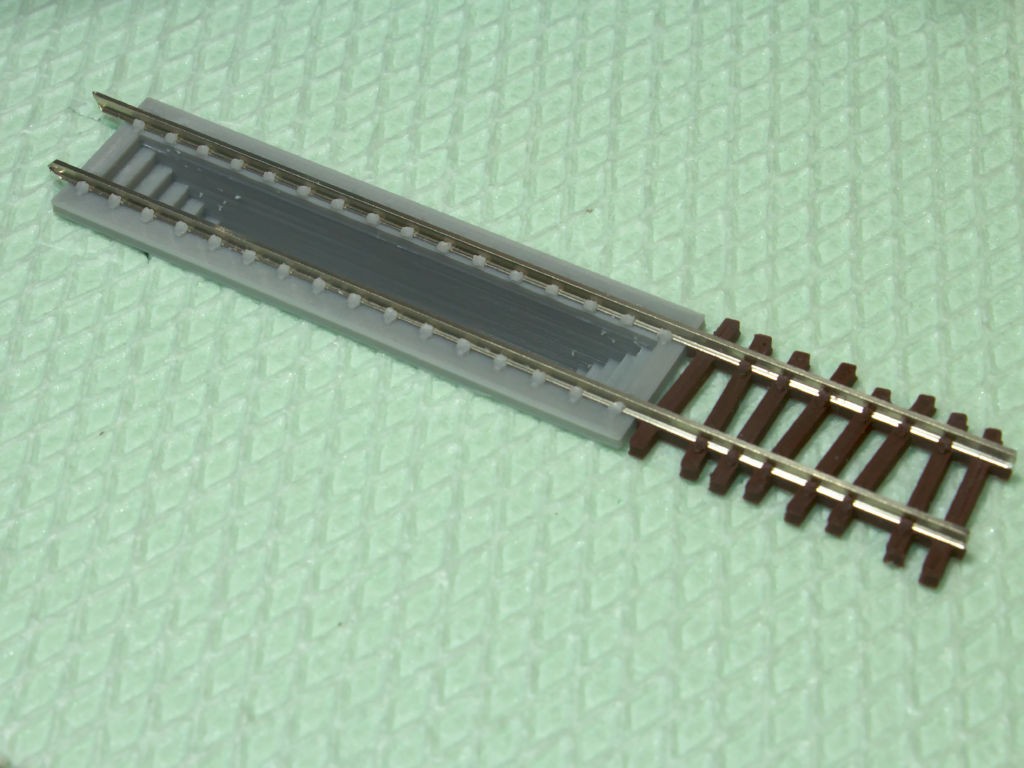
Downloads
OpenSCAD model – model is licensed under a Creative Commons Attribution-NonCommercial 4.0 International License.
